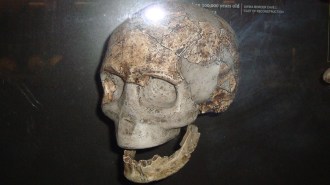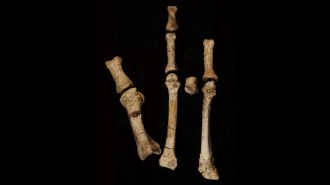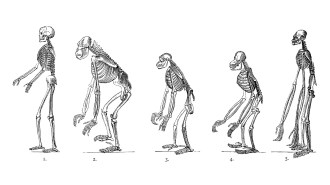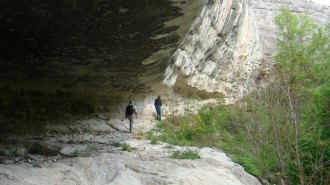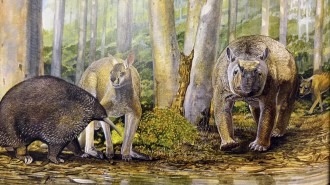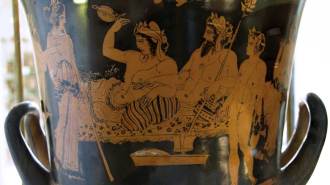Neandertals had an eye for patterns
Notches on a raven bone suggests human relatives intentionally created even spacing
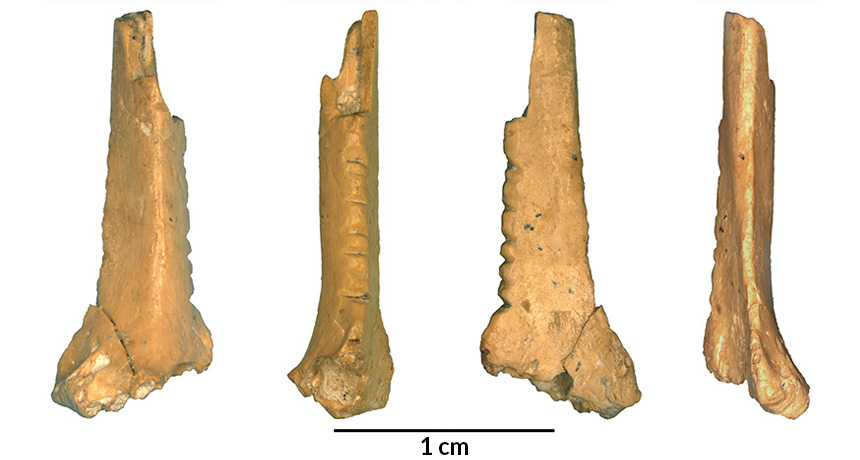
CUTS ABOVE Notches carved into a raven’s wing bone by Neandertals include two that were added to create a consistent, possibly symbolic pattern, scientists say. Added notches are second from bottom and second from top in the side view of the bone.
Francesco d’Errico


